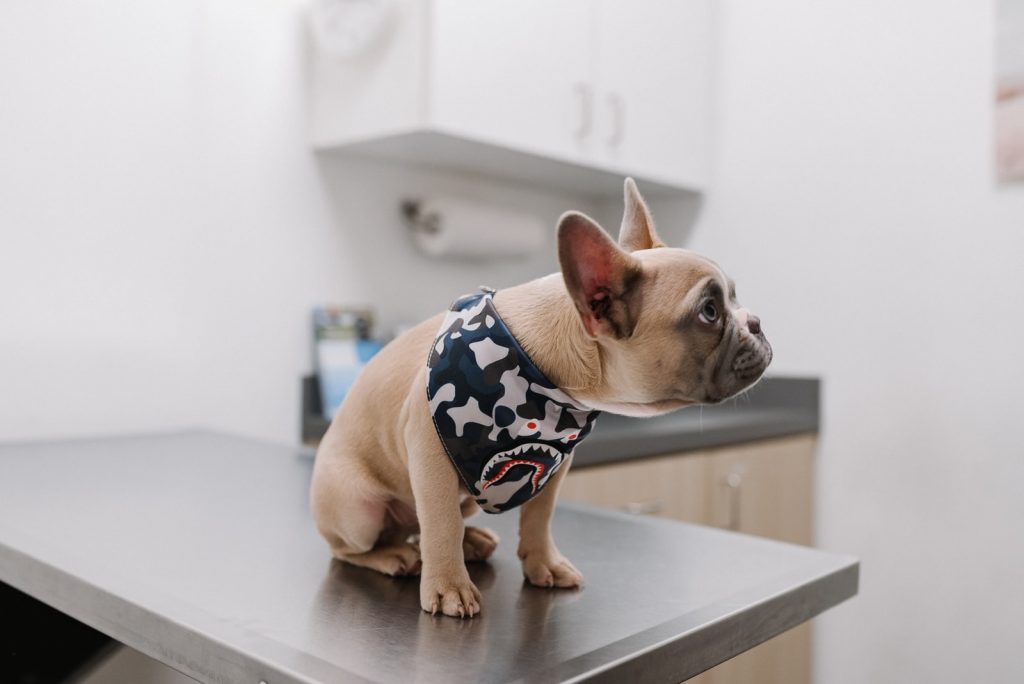Like many newbie parents, new pet owners may overthink every little quirk their dog displays. The good news is there are signs that tell you when your dog is growing.
In addition to regular checkups with a veterinarian, including routine wellness procedures such as an annual blood panel, fecal testing and urine analysis, these indicators should be noticeable to pet owners.
A very healthy dog is eager to spend time with family, greeting you at the door, coming to you for playtime, watching and observing with interest.
If your dog suddenly starts spending time alone, is disengaged or sleeping more, it could be a sign of a health issues. Changes in his behavior are one of the number one reasons pet owners discover something is off with their companions. Pay attention to any change and schedule an appointment with your veterinarian in office dispensing.
Another sign and symptom of good health in dogs are clean ears: no waxy buildup, no discharge and no pungent or musky smell.

It’s normal for dogs’ ears to get dirty, so routine cleaning is commended. Ignoring dirty ears can lead to pet ear infections the second most common reason most dogs owners visited vets in 2015, and a major source of irritation for our pets.
Clean ears also help retain normal body temperature by radiating heat out.
One tell-tale sign and symptom your dog has an ear infection: smelly ears, sometimes like the smell of yeast. Schedule a checkup with your veterinarian if you feel your dog is suffering from an ear infection. Common signs besides the smell and waxy buildup are side-to-side shaking of the head and pawing at the ear.
If you have questions about your dog’s health or are concerned that an issue may be present, contact your veterinarian instantly. Remember: Your dog can’t always tell you when something is wrong. If you see a sign that has you questioning your pet’s health, don’t hesitate to schedule a checkup with a vet.
Why Examine Your Dog At Home?
If every dog owner are to learn what was involved in a physical exam, they would watch their dogs closer and take them in for an examination by their veterinarian as soon as necessary. Veterinarians wouldn’t assume to make their living off of giving vaccines and heartworm tests, owners could pay for what was necessary, and the pets would benefit by being taken care of when needed.
I don’t assume every dog owner to be an expert at a physical exam but here are a few things you can check at home and simple steps you can follow to decide when it is time to take your dog in for further medication. This physical exam will not be more than five minutes and you should do it every week:
Keeping an eye out for early signs and symptoms of medical problems is one of the most important things you can do for your dog, and could save you a lot of stress, time and money in the long run not to list your dog’s health. Here are 3 ways to examine your dog’s health at home.

Fresh Breath
A healthy mouth is the best way to a healthy pet. Relatively clean-smelling breath and clean teeth absent of tartar buildup are signs of good healthy teeth.
If your dog has gingivitis (also called gum disease) or periodontitis, it can ultimately affect vital organs of the dog and lead to serious health issues. Periodontitis is an illness of the supporting structures of the teeth (bone, ligaments, etc.) and is the primary cause of tooth loss in pets. It’s caused by the buildup of food, plaque, and tartar in the spaces within the gum and the lower part of the tooth.
A stinking smell coming from your dog’s mouth could mean tooth decay or worse: oral melanoma, an aggressive form of cancer.
Regular dental care can result in improved overall health and longevity of a pet by spotting issues early on.
Shiny, Clean Coat
Nutritious pets will typically have a shiny, clean coat due to natural oils and shedding. A healthy pet doesn’t need to be bathed regularly unless your pet got dirty. Regular bathing for pets with fur (versus specific breeds with hair which require grooming) isn’t necessary and can lead to skin irritations.
If your dog is usually licking, chewing or scratching, it could be a sign of a skin irritation, skin allergies, a bug bite or the presence of fleas. It’s also a sign your dog is uncomfortable.
Regular Bladder and Bowel Movements
How do you know if your dog has a stomach ache? Check out his poop. Healthy intestine movements will be absent of blood, mucus, worms, eggs, a chalky white discoloration, a black, tarry appearance, a greasy coating or diarrhea. If you notice a change it could be due to a change in diet, stress, allergies, parasites, bacterial infection, spread infection, ingestion of a toxic substance, pancreatitis, cancer, inflammatory bowel disease, colitis, or an obstruction.
The color of your dog’s urine is important: If your pet’s pee is the color of transparent yellow (straw yellow, pale gold, amber, clear yellow) it’s a sign of good health.
Dark or bright yellow could be a symptom of dehydration. Orange is typically associated with jaundice, gallbladder problems, pancreatic problems, severe dehydration, liver disease or damaged blood cells.
If your dog’s urine is reddish, pink or cloudy it may be a sign of a urinary tract infection, cystitis, clotting diseases, trauma or cancer. If your dog is peeing inside the house or off a customary piddle pad, it could also be a sign and symptom of distress due to a health issue. A checkup is highly recommended for further testing.







